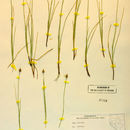Capitate sedge is found in arctic and alpine environments [
10] on marshy
meadows to dry alpine slopes [
14,
23]. It grows on acidic rocky,
gravelly [
7], sandy [
15], or peaty [
5] soils.
In the alpine zone of the eastern Cascade Range in southern interior
British Columbia capitate sedge is dominant where the soil is strongly
acid (pH 4.9-5.3) and coarse textured, with loamy sand predominating
[
15]. In the alpine zone of Mt. Baker, Washington, capitate sedge only
grew in the drier eastern region, on sites with the least snow
accumulation. However, the soils there remained moist well into summmer
because of drainage from upslope [
3].
Capitate sedge is found at the following elevations:
Elevation (feet) Elevation (m)
AK 0- 3,281 0-1,000 [
11]
CA 6,234-12,900 1,900-3,932 [
9,
14]
WA 7,546- 8,038 2,300-2,450 [
3]
BC 2,402- 2,500 732- 762 [
16]

